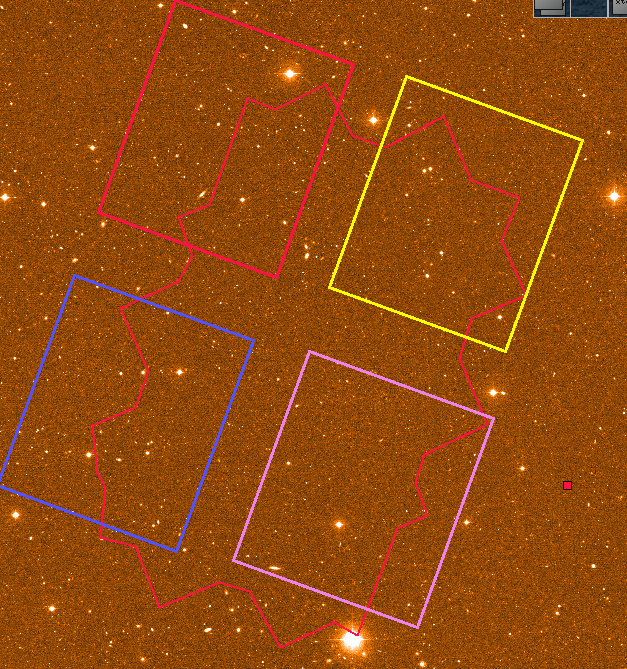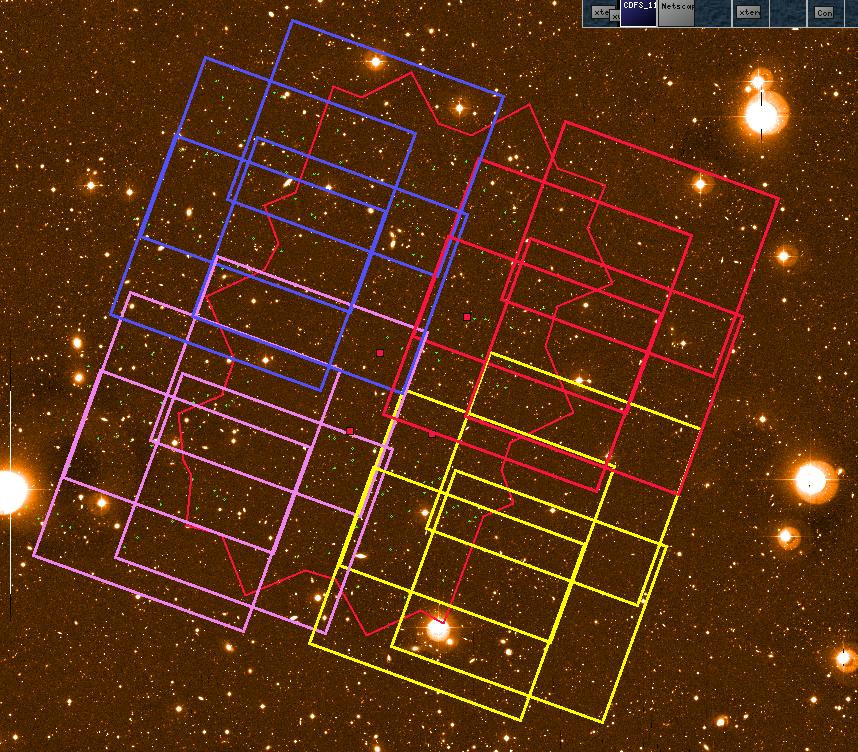

Overview of the VIMOS spectroscopic strategy
The cumulative source counts on the CDF-S field taken from the deep public FORS1 data, shows that at the limit of the VIMOS capability (VAB=25) there are ~6000 objects over the 160 arcmin2 of the GOODS field, or ~37 arcmin-2. Moreover, the VIMOS geometry (16' x 18', with a cross gap of 2' between the quadrants) is such that only 50% of it can overlap with the 10' x 16' GOODS field. Hence up to 400 objects at a time can be observed. 4 VIMOS pointings are required to cover the whole GOODS area. 24 masks (6 per pointing) are necessary to ensure ~96% completeness in the spectroscopic coverage of ~6000 targets. With an average integration time of 4h per mask and 30% overheads, this makes a total of 125h.
The VIMOS spectroscopic campaign is designed to complement the FORS2 spectroscopic program. A Medium resolution campaign in the red (VIMOS MR_orange grism) is dedicated to reaching the required completeness in the 0.5 < z < 1.3 redshift range. A low resolution spectroscopic campaign is conducted with the VIMOS LR_Blue grism to cover the 2.3 < z < 3.5 redshift range not considered by the FORS2 spectroscopy. The target selection is based on BzK objects (see for detail Daddi et al. 2004), u-dropouts, sub-u-dropouts and Chandra sources. The table below shows for the variuos redshift intervals the features most useful for redshift determination, and the most appropriate instrument/grism combination for detecting such features.
| Redshift | Key Features | Instrument/grism | z < 0.5 | [OII],Hbeta,[OIII],(Halpha),CaII H&K | VIMOS LR_Blue | 0.5 < z <1.3 | [OII],Hbeta,CaII H&K | VIMOS MR / FORS2 | 1.3 < z <2.3 | [OII],CaII H&K;CIV,AlIII | FORS2 | 2.3 < z < 3.5 | Lyalpha,SiIII,CII,CIV,OI,SiIV | VIMOS LR_Blue | z > 3.5 | Lyalpha,SiIII,CII,CIV,OI,SiIV | FORS2 |
|---|
| Send
comments to <goods@eso.org>
Last modified: Thu Oct 20 14:21:50 MEST 2005 |